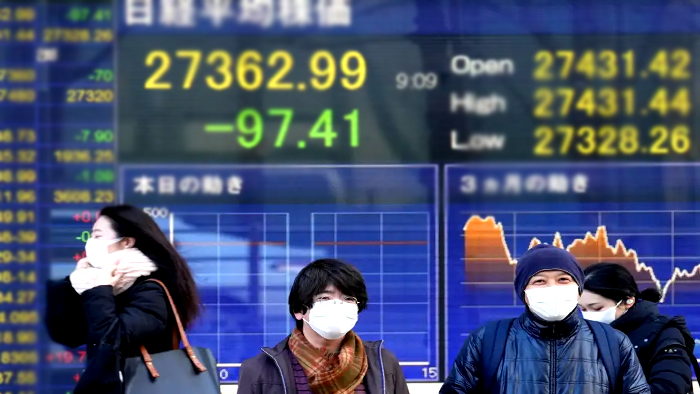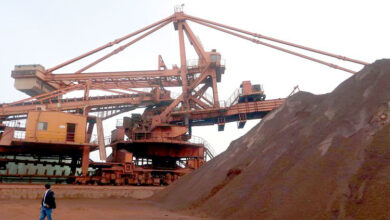Asian stocks increased on the U.S. reprieve from inflation, but Fed caution prevailed.

After statistics revealed that U.S. consumer prices barely increased in November, optimism that inflation has peaked and interest rate increases will slow and eventually stop in 2023 was stoked. Asian markets rallied on Wednesday, bonds were strong, and the currency nursed losses.
However, apprehension about the future steps of policymakers kept things from getting out of hand when the Federal Reserve met later in the day and central banks in Britain and Europe met on Thursday. Despite China’s reopening after rigorous COVID controls, investors are also paying close attention to the global economy.
In November, the headline consumer price index in the United States increased by 0.1%, which was 0.2% slower than economists had predicted. This was the weakest rate of growth for about a year.
Related: Asian stocks rise slowly as concerns over the Fed meeting and CPI data persist.
With German DAX futures flat, pan-European Euro Stoxx 50 futures up 0.15%, and FTSE futures up 0.05%, European markets were poised to begin higher. Meanwhile, the S&P 500 e-minis and U.S. stock futures both increased by 0.35%.
The largest MSCI index of Asia-Pacific shares outside of Japan increased by 1% in Asia. This month so far, the index has increased by 1.2%.
Australian markets rose 0.67%, while the Nikkei in Japan gained 0.78%.
On Wednesday, stocks in China and Hong Kong also increased as the mood was supported by the relaxation of COVID-19 restrictions and a renewed emphasis on economic expansion.
The Hang Seng Index increased 0.89%, while China’s blue-chip CSI 300 Index increased by 0.3%.
We’re facing a scenario where the more developed markets, the major markets, are facing a recessionary environment in 2023, according to Sat Duhra, Portfolio Manager on Janus Henderson Investors’ Asia ex-Japan Equity Team. “If the CPI comes off and China fully reopens, that’s still not really enough to go gung-ho in Asia’s markets,” he added.
“China’s reopening will have some positive effects, but I don’t believe they will be sufficient to outweigh the drawbacks.”
Overnight, Wall Street rose before reversing course to end the day’s trading session with the S&P 500 up 0.7%. The Nasdaq soared as much as 3.8% before closing 1% higher, while the index rose as much as 2.8% at one point.
As U.S. interest rate forecasts decline, the dollar is dropping from 20-year highs and falling quickly, while bonds are rising.
The benchmark 10-year U.S. Treasury yield decreased by 11 basis points overnight and remained constant at 3.4956% in the afternoon Asian session. Two-year yields, which reflect expectations for short-term interest rates, reached 4.2053% vs. a U.S. finish of 4.229%. [US/]
Following the release of the inflation statistics, the US dollar dropped 1.5% against the yen and held firm in Asia at 135.37 yen. The U.S. dollar index, which compares the dollar to a basket of other key trading partners’ currencies, dropped to a six-month low of 103.57 before levelling off at 104.04. It has decreased by more than 9% since reaching a two-decade peak in September. [FRX/]
BUILD AHEAD
Markets anticipate the Fed will delay the pace of hikes but still lift its funds rate goal range by 50 basis points to between 4.25% and 4.5% later on Thursday. This is demonstrated by futures pricing.
The “dot plot” chart depicting committee members’ predictions of future rate moves and chairman Jerome Powell’s tone in his press conference become the main points of attention at this point.
Inflation is showing evident indications of easing, but it is still high, according to Tareck Horchani, head of dealing for prime brokerage at Maybank Securities in Singapore.
The median forecast in September called for a peak in the Fed funds rate of about 4.6% next year. “The market wants to know if the Fed will change their stance on the dot plot,” he said.
Related: Asian stocks decline, and the dollar strengthens ahead of a central bank rate hike.
Oil prices rose 1% along with the general mood before being slightly curtailed in Asia. U.S. crude was trading at $75.12 per barrel, and Brent futures were last at $80.35 per barrel.
Overnight, Bitcoin experienced a surge, but it was unable to hold onto gains beyond $18,000.
The arrest of FTX founder Sam Bankman-Fried, who was charged by American prosecutors on Tuesday with stealing billions of dollars in customer cash from the cryptocurrency exchange, has had little impact on cryptocurrency markets, but it has left them transfixed.





